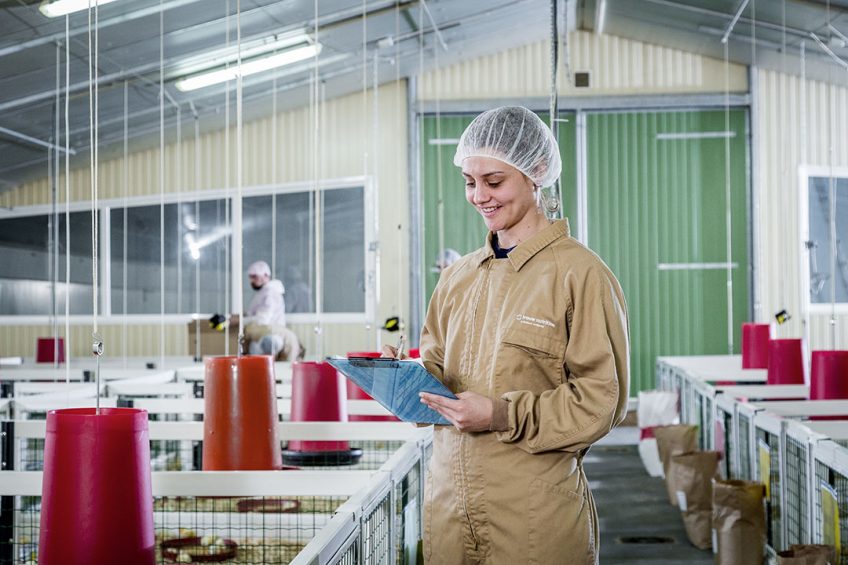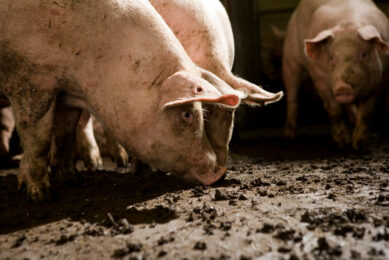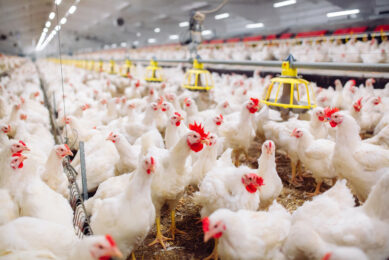4 trends driving gut health in 2019

Meeting growing demand for animal protein is a top priority across the production chain. Beyond achieving animal health and performance goals, producers must address bans on antibiotics and threats such as Salmonella and mycotoxins. Here are 4 trends projected to drive gut health in 2019, and insights into Trouw Nutrition research addressing these trends.
 Supporting feed safety through effective alternatives and on-site nutritional analysis
Supporting feed safety through effective alternatives and on-site nutritional analysis
The EU’s removal of formaldehyde as a hygiene condition enhancer requires alternative tools to support feed hygiene. Acting as a bacterial decontaminating agent, formic acid has been shown to be an effective formaldehyde alternative. Additionally, organic acids have shown to improve feed safety and support digestion as they interact with gram-negative bacteria. Threats to feed hygiene demand an integrated approach, addressing enterobacteria, moulds and mycotoxin risk. This requires optimal raw material quality and adequate feed processing procedures. Analysis at control points during feed production can detect risk factors and advise nutritional value decisions. Trouw Nutrition’s NutriOpt On-Site Adviser combines near infrared (NIR) technology with NutriOpt’s nutritional database, allowing feedstuffs to be scanned in the field. Results are sent to the database for evaluation and a detailed report is sent to the user’s smartphone, providing instant data on feed quality standards for pigs, poultry and ruminants.
 Managing microbiota to combat pathogens
Managing microbiota to combat pathogens
Advanced DNA techniques (16S metagenomic sequencing) are showing how feeding strategies can modify intestinal microbial balance and influence microbiota composition in piglets and broilers to support gut health.
Combating pathogens in piglets can be achieved with feed additive combinations. Dietary supplementation with a combination of feed additives including a blend of short- and medium-chain fatty acids, target release ingredients and a phenolic compound has been shown to modulate piglets’ intestinal microbiota in the presence of various genus of bacteria, i.e. Ruminococcus, Lactobacillus and Faecalibacterium. Findings suggest these combinations of additives help promote weaning piglets’ growth, prevent post-weaning diarrhoea, and improve health status.
In broilers, feed additives can be used to influence microbiota composition. While feed agents may increase the abundance of certain bacteria to support piglets’ enteric health, when applied to broilers’ drinking water, additives may reduce the amount of bacteria, and at the same time increase diversity, therefore, supporting a balanced microbiota. To assess the microbiome comprehensively, Trouw Nutrition conducts R&D trials and macroscopic evaluations in the field. Gut health scoring is useful for evaluating dysbacteriosis, providing insight into how different feed components and management act in the bird’s system. Validated with histology, gut health scoring has shown additional benefits on many farms, see Figure 1.
Figure 1 – Poultry gut health service tool: Good correlation with histopathology.

 Maintaining health and performance
Maintaining health and performance
Necrotic enteritis is a pathogenic disease caused by Clostridium perfringens and estimated to cost broiler farms more than two billion dollars annually (Van der Sluis, 2000a,b and Timbermont et al, 2011). Research presented at the 2nd International Necrotic Enteritis Conference in Poultry, compared the performance of birds under a Clostridium perfringens type A challenge receiving different dietary treatments. Researchers replaced in-feed antibiotics with a synergistic blend of selected feed additives, including phenolic compounds. Results showed the broilers receiving feed additive blends had similar growth performance compared to birds receiving an AGP.
To maintain performance in post-weaning piglets without antibiotics, research is focusing on the effect of a blend containing fungal fermented rye on the binding capacity of E. coli and Salmonella in piglets. Presented at the 2018 International Pig Veterinary Society Congress (IPVS) in China, research found positive results on performance, stimulation of immune responses and lower diarrhoea scores in post-weaning piglets. Furthermore, using the blend, the results of a challenge with a pathogenic E. coli (F4) also shows significant reduction in extended-spectrum beta-lactamases (ESBL) shedding, see Figure 2.
 Addressing regional production challenges
Addressing regional production challenges
Regulatory and production practices vary by region. As Latin America’s poultry producers become less dependent on the broad use of antibiotics and increase exports, food safety and traceability are key concerns. These producers must comply with local and international legislation, often requiring the reduction of antibiotics throughout the production chain. More birds raised in high-density environments creates favourable conditions for Salmonella-positive flocks. Salmonella Heidelberg is an emergent serovar, proving to be more invasive than other types. Salmonella bacteria excreted into bird faeces pose a risk for environmental contamination, pathogen spread within the flock and contamination of chicken carcasses during slaughtering. Combination approaches show promise in decreasing Salmonella Heidelberg counts in the caeca of broilers presented with a disease challenge. Recent studies showed that Fysal Fit-4 in combination with Selko-pH significantly reduced caecal colonisation of Salmonella Heidelberg on day 7 in a study of broilers of 2,4 log compared to control. As peak caecal counts are expected between day 7 and 14, reduction in the shedding of Salmonella in faeces early in the production cycle helps to reduce Salmonella load in the litter.
Remarking on the challenges faced by poultry producers in Latin America, Victor Aguirre, Sales Director LATAM Trouw Nutrition, says: “Despite the growing interest of poultry producers to reduce the use of antibiotics, our perception within the Latin America markets, is that antibiotic reduction strategies must consider three factors:
- Alternative solutions to sustain production levels without losing animal performance, combined with the right expertise and integrated approach.
- Education on antibiotic reduction from a consumer’s health perspective, animal performance, and economic perspective.
- Awareness of food safety among consumers and industry is prompting new solutions to maintain animal health without antibiotics.
In addition to meeting demand for poultry products, we must do so in a responsible and sustainable way. Antibiotic reduction should be a top priority in the years to come and Trouw Nutrition is committed to providing alternatives to meet this goal.”
Author: Nienke de Groot, Global Program Manager Gut Health, Trouw Nutrition











